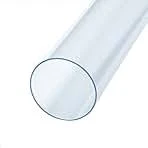Oct . 14, 2024 16:35 Back to list
PPR Pipe Fittings Overview and Best Practices for Installation and Maintenance
Understanding PPR Pipe Fittings A Comprehensive Guide
In recent years, PPR (Polypropylene Random Copolymer) pipes and fittings have gained significant popularity in plumbing, heating, and cooling systems due to their numerous advantages. Made from a versatile and durable thermoplastic material, PPR piping systems offer a reliable solution for both residential and industrial applications. This article provides an overview of PPR pipe fittings, their benefits, installation methods, and applications.
What are PPR Pipe Fittings?
PPR pipe fittings are the connectors and accessories used in conjunction with PPR pipes to create a complete piping system. These fittings come in various shapes and sizes, including elbows, tees, reducers, couplings, and end caps, allowing for flexible and efficient infrastructure design. The fittings are designed to maintain the same physical and chemical properties as the pipes, ensuring a uniform system that resists corrosion, scaling, and other forms of degradation.
Benefits of PPR Pipe Fittings
1. Durability PPR fittings are incredibly robust, resistant to chemicals, and able to withstand high temperature and pressure, making them ideal for hot and cold water applications.
2. Lightweight Compared to traditional materials like metal, PPR fittings are lightweight, which simplifies transportation and installation.
3. Easy Installation The fusion welding method typically used for joining PPR pipes and fittings creates a seamless bond that enhances system integrity and minimizes leak potential. This method also reduces the need for additional sealing materials, making installation faster and more efficient.
4. Cost-Effective Although the initial investment might be comparable to other materials, the long lifespan and reduced maintenance costs associated with PPR systems make them a cost-effective choice in the long run.
5. Environmentally Friendly PPR products are fully recyclable and free from harmful toxins, making them a safer option for both human health and the environment.
Installation Process
ppr pipe fitting

Installing PPR pipe fittings involves a process known as socket fusion welding
. This method includes1. Cutting Using a pipe cutter, the PPR pipe is cut to the desired length, ensuring a clean and straight edge.
2. Heating Both the pipe and fitting ends are heated using a specially designed heating tool until they reach the appropriate temperature for fusion.
3. Joining The heated ends are joined together with a twist motion to ensure a tight fit, and the fused connection is allowed to cool, solidifying the bond.
Proper installation is crucial for the longevity and performance of PPR systems, so it’s recommended to follow manufacturer guidelines and local plumbing codes.
Applications of PPR Pipe Fittings
PPR pipe fittings are commonly used in various sectors, including
- Residential Plumbing They are ideal for water supply, heating systems, and even draining applications in homes. - Industrial Applications PPR fittings are used in factories for transporting hot and cold liquids, making them suitable for chemical processing and manufacturing.
- Agricultural Irrigation Their robust nature makes PPR systems a popular choice for irrigation, helping to conserve water and enhance agricultural productivity.
Conclusion
PPR pipe fittings have revolutionized the plumbing industry with their superior durability, ease of installation, and cost-effectiveness. Whether for residential, industrial, or agricultural use, these fittings provide a reliable solution for a wide range of applications. As more people and businesses appreciate the advantages of PPR systems, their prevalence is expected to increase, further solidifying their position as a top choice in modern plumbing and piping solutions. By understanding the benefits and application methods of PPR pipe fittings, individuals and professionals can make informed decisions for their piping needs.
-
PVC Transparent Sheet Roll - Durable & Flexible PVC Plastic Sheet Roll for Industrial & Home Use
NewsJun.24,2025
-
High-Quality PVC PPR Pipes and Fittings Durable ERA PPR Solutions
NewsJun.10,2025
-
High-Quality Large HDPE Sheets & Large Diameter PVC Pipe Durable Large PVC Pipe Supplier
NewsJun.10,2025
-
High Density Polyethylene Cutting Board - Durable & Food Safe
NewsJun.09,2025
-
3 Inch PVC Pipe for Durable Irrigation Affordable & Reliable
NewsJun.09,2025
-
Premium PPR Plastic Water Pipe Fittings - Durable & Leak-Free
NewsJun.09,2025

